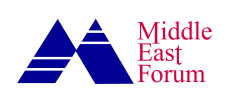The declaration by the military council assembled by Hay’at Tahrir al-Sham (HTS) that the group’s leader, Ahmed al-Sharaa, would be Syria’s interim president surprised no one. Since HTS’s ouster of Syrian President Bashar al-Assad, the man formerly known as Abu Mohammed al-Jawlani has consolidated control over Damascus, demanding that both Syrians and foreign officials treat him as Syria’s uncontested leader.
During his induction ceremony on January 29, 2025, al-Sharaa wore a military uniform before dozens of allied rebel commanders, signaling the military roots of his mandate. His remarks during the ceremony were brief, largely highlighting the victory over the Assad regime.
Al-Sharaa and his acolytes know how to appease both local and international actors with rhetoric, while transforming Syria’s state institutions for their own purposes.
The following day, his highly anticipated speech to the Syrian public lasted only five minutes. While al-Sharaa struck a conciliatory tone, his comments were generic, particularly regarding the transitional period. He stated that the country would prepare for general elections but did not provide a timeline, despite a previous interview in which he said elections could take up to four years to hold. He spoke about transitional justice but did not outline how his government would implement it.
More importantly, a series of significant announcements accompanied al-Sharaa’s appointment. His interim government announced the dissolution of parliament, the cancellation of the constitution, the establishment of a legislative council, and the dissolution of the former ruling Baath party, along with all former security and military institutions, which HTS’s own apparatus has replaced.
Removing Assad’s brutal regime is a positive step. However, replacing former institutions with ones dominated by HTS loyalists puts at risk any hope of a pluralistic governance system in Syria. Al-Sharaa reassures Syrians and the international community that his transitional government will be inclusive and representative of Syria’s diverse society, yet he so far has not fulfilled these promises.
HTS, a U.S.-designated terrorist organization, is effectively reshaping the Syrian state to align with al-Sharaa and his Islamist ideology. It will likely prolong the transitional period. Al-Sharaa and his acolytes know how to appease both local and international actors with rhetoric, while transforming Syria’s state institutions for their own purposes. Without a legal mandate, for example, they have altered the country’s education curricula by introducing content promoting Islamic values, while removing material they perceive as contrary to their interpretations of Islam.
When a single group controls state institutions, it becomes easier for them to remain a major actor with legitimate popular backing.
The past is precedent. HTS’s actions are reminiscent of how the Baathists under Hafez al-Assad consolidated control. Beginning in 1971, Hafez orchestrated sweeping transformations that changed Syria’s face for decades. Baathist Syria prioritized the country’s Arab identity. HTS seeks to establish something blending Arab nationalism and Sunni Islamist supremacy. After five decades under an Alawite-dominated regime, many Sunnis are eager to support this shift. HTS now has the upper hand in shaping a permanent constitution for the country, one that will institutionalize its Islamist ideology.
HTS will likely use the influx of aid from Gulf states like Qatar to further strengthen its grip in this transitional period. The more funding it receives from its Arab patrons for reconstruction and recovery efforts, the more it will exploit these resources to take credit for improving the livelihoods of Syrians—90 percent of whom live below the poverty line. Beyond reinforcing its image as Syria’s liberator from Assad, HTS aims to translate economic opportunities created during the transitional period into political capital for future electoral events.
Syria will eventually have some form of elections and HTS aims to capitalize on every available opportunity to maintain its dominance by winning the hearts and minds of Sunni Arabs. When a single group controls state institutions, it becomes easier for them to remain a major actor with legitimate popular backing. Even if al-Sharaa may not be a de facto strongman in the future, he is likely to remain the most powerful figure in Syria’s political landscape for some time. The few remaining liberal forces in Syria have a tough battle in the years ahead.








